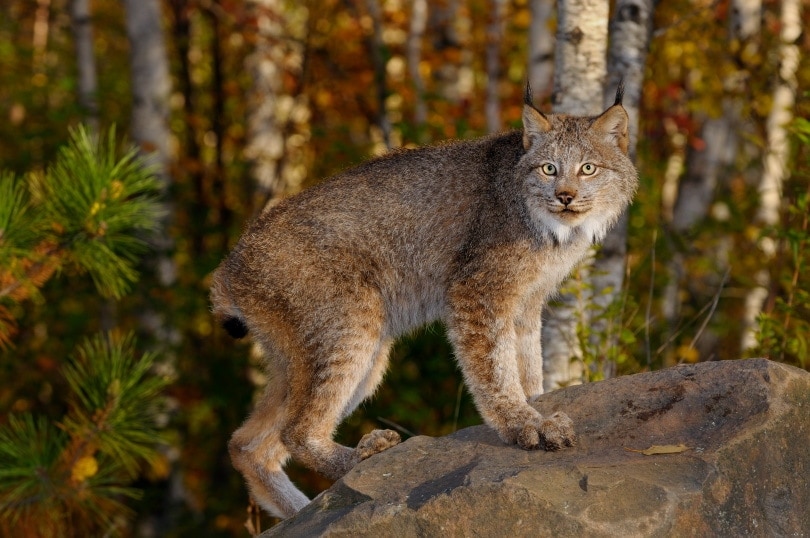As we watch our pet cats relentlessly stalk their toy mice across the house, it’s natural to compare them to their wild cousins, hunting prey deep in the forests across the savanna. Most of us in North America are familiar with big cats like lions and tigers, but many of us don’t know as much about the wild felines located much closer to home. In this article, we’ll discuss six types of wild cats found in North America. We’ll also talk about the threats to wild cat populations and what is being done to protect them.
Read on to learn more about the fascinating wild cats of North America!

The 6 Types of Wild Cats in North America
1. Bobcat
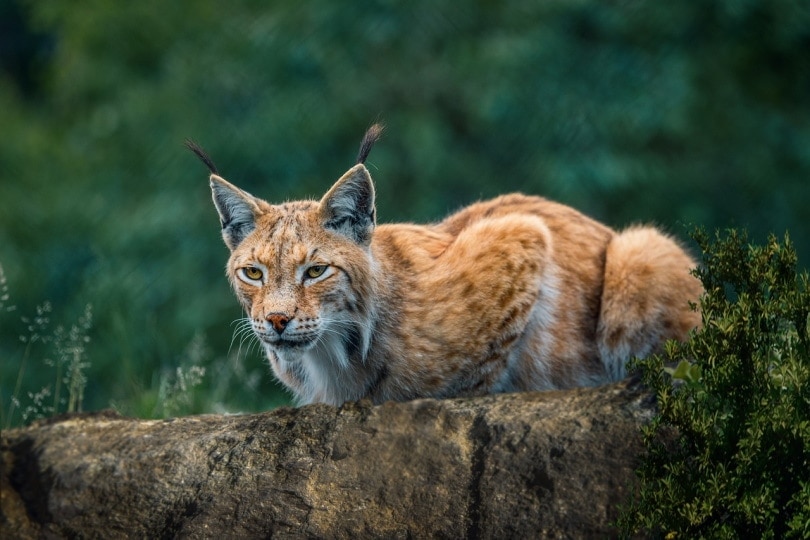
| Scientific name: | Lynx rufus |
| Weight: | 13-29 pounds |
| Range: | Most of the United States, Southern Canada, Northern Mexico |
Bobcats are the most common wild cat species in North America. They can survive in many different habitats, from forests to swamps to deserts. Bobcats are usually light gray to reddish-brown, with darker spots and stripes throughout their coat. Named after their short, “bobbed” tails, bobcats are also identified by their pointed ears and ruffed faces. Bobcats will eat almost any prey they can catch, one of the primary reasons for their success as a species. They eat mostly rabbits, but will also prey on other small mammals, birds, deer, and even human pets if given the chance. The wild bobcat population is considered stable, even increasing in some areas.
2. Canadian Lynx
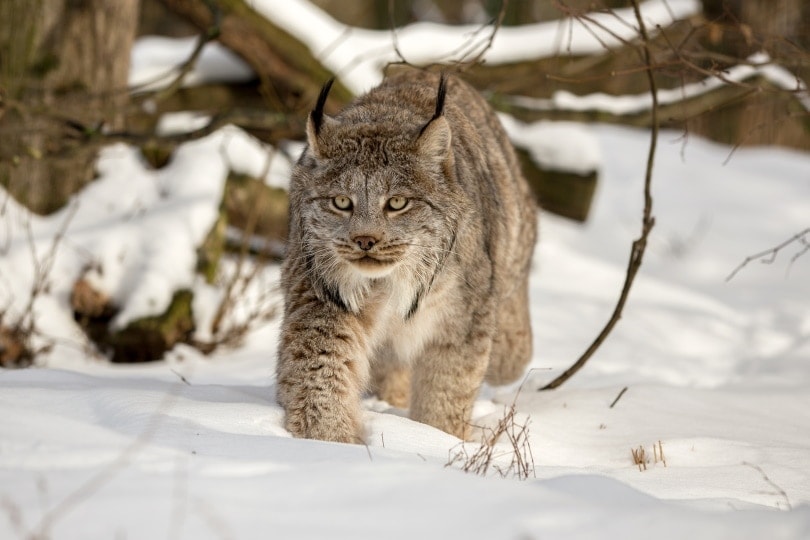
| Scientific name: | Lynx canadensis |
| Weight: | 20 pounds |
| Range: | Canada, the northern part of the United States, and Alaska |
The Canadian lynx is the cold-weather cousin of the bobcat, haunting the frigid forests of northern North America. Despite the name, the Canadian lynx was once fairly common in many Northern and Western U.S. states. The species is now considered threatened, especially in the Lower 48 states. The Canadian lynx looks similar to a bobcat but is distinguished by long, black ear tufts, a black-tipped tail, and extra-large feet designed to walk on top of the snow. Northern Canadian lynx feed almost exclusively on snowshoe hares. South of the (Canadian) border, the lynx eats small rodents, game birds, and squirrels. They are solitary, nocturnal hunters, rarely spotted by humans.
3. Mountain Lion
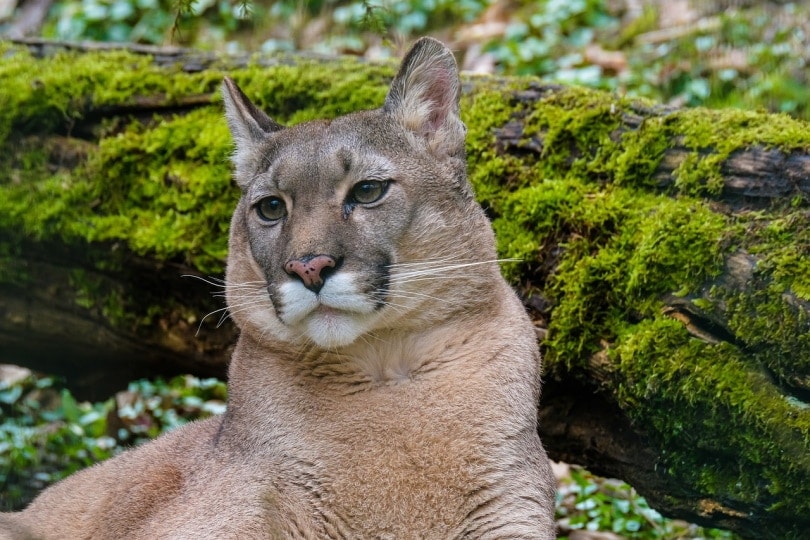
| Scientific name: | Puma concolor |
| Weight: | Males, 115-220 pounds; Females, 64-141 pounds |
| Range: | Throughout North and South America |
Also called puma, cougar, panther, and catamount, this large wild cat is widespread across North America. Mountain lions are beige, with light undersides, and black noses, ear tips, and tail tips. These animals vary widely in size, depending on which portion of their range they are found. Mountain lions can adapt to almost any habitat and live in mountains, deserts, forests, and wetlands. They eat mostly deer but will consume smaller animals if necessary for survival. Despite the size of their range, mountain lions are a threatened species. These cats are fiercely territorial and need a vast hunting range to survive. As the amount of available land falls victim to human development, mountain lions are squeezed out. Living close to humans also presents the possibility of tragic encounters, with pets and even people falling victim to hungry cougars.
4. Ocelot
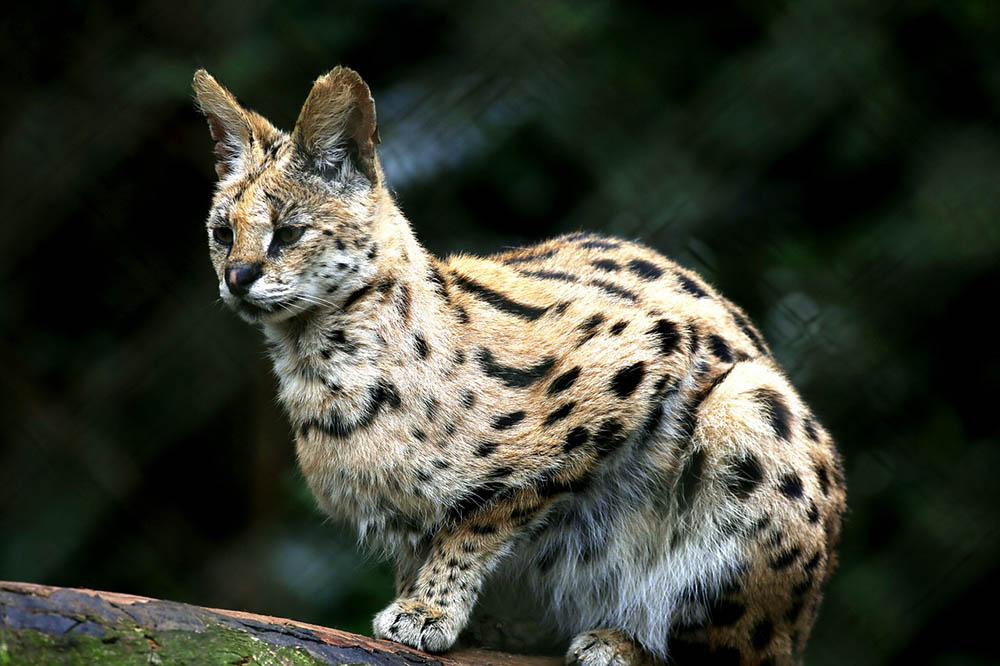
| Scientific name: | Leopardus pardalis |
| Weight: | 15-34 pounds |
| Range: | Southern Texas, Mexico, Central, and South America |
Ocelots are one of the most beautiful animals in the world. These wild cats sport gorgeous golden coats, splashed with dark markings in an array of patterns. Their undersides are white, with black bands on their tail and black stripes on their faces. Ocelots are nocturnal hunters and spend much of their time out of sight. They will only live in a habitat with plenty of trees and vegetation to sleep and hide in during the day. Although one subspecies of the ocelot—the Texas ocelot—is endangered, the ocelot as a species is considered stable. They are numerous in tropical regions south of the United States. Ocelots feed on small rodents, fish, birds, snakes, and lizards. They are occasionally eaten by bigger cats like jaguars and mountain lions and occasionally even by boa constrictors.
5. Jaguar
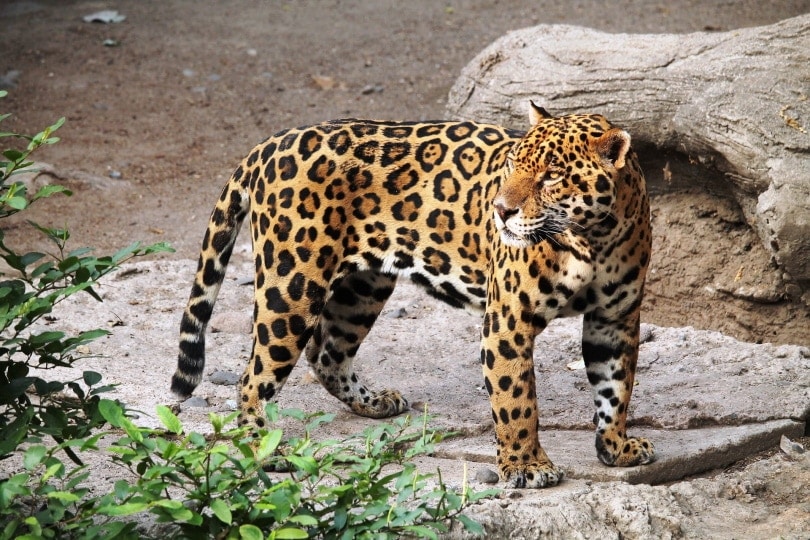
| Scientific name: | Panthera onca |
| Weight: | 70-304 pounds |
| Range: | Southern Arizona, Mexico, Central, and South America |
The largest wild cat in North America and the third-largest in the world, jaguars are at the top of the food chain in the Western Hemisphere. They have coats golden to rusty red, covered with darker markings: spots inside a circle called a rosette. They inhabit jungles, forests, grasslands, and swamps. Jaguars are fantastic swimmers, regularly spotted near bodies of water. They’ve even been known to swim the Panama Canal! Jaguars eat almost anything they can ambush, usually larger prey like deer, tapirs, and cattle. Jaguars are territorial and often roam long distances to breed. These big cats are a threatened species, although conservation efforts are widespread (more on this later).
6. Jaguarundi
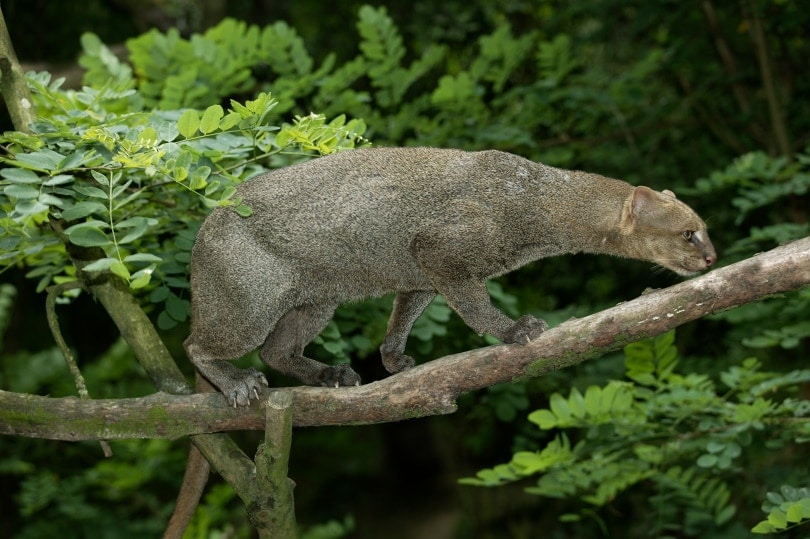
| Scientific name: | Herpailurus yaguarondi |
| Weight: | 6-15 pounds |
| Range: | Northern Mexico, Central, and South America |
The smallest and strangest of the North American wild cats, jaguarundis aren’t much bigger than a domestic house cat. They are found in three different colors, partially related to their habitats: reddish-brown, brownish-gray, and black. Jaguarundis look a little bit like an otter or weasel, with their long bodies and flat faces. However, they are genetically similar to cheetahs and mountain lions. These cats can be found in a variety of habitats, so long as they have thick ground cover to hide. Forests, grasslands, jungles, and swamps are all possible locations for these secretive animals. Jaguarundis are vocal cats who hunt during the day, making them the most likely North American wild cat to be spotted by humans. They eat mainly small rodents, reptiles, and birds. This species is not considered threatened but is protected by law over most of its range.

What Are The Biggest Threats To Wild Cat Populations In North America?
As we learned, several of the wild cats of North America are considered endangered or threatened. Many species are already extinct from portions of their previous range into the United States. Humans are responsible—directly or indirectly—for these threats.
Loss of habitat due to human development is the primary threat to all wild cat species. Many of these animals require an enormous territory to roam and hunt. As humans take up more and more land for building, agriculture, and logging, the big cats are running out of space. Sometimes just clearing a forest is enough to drive the animals away, such as the ocelots, who rely on plant cover to stay safe during the day.
Many wild cat populations first began to decline due to hunting for pelts. Others were killed by farmers and ranchers trying to protect their livestock. While this is less of a threat today, wild cats who live close to humans may become “nuisance animals” and face elimination.
Smaller wild cats often fall victim to one of the leading causes of domestic animal death: vehicle accidents.
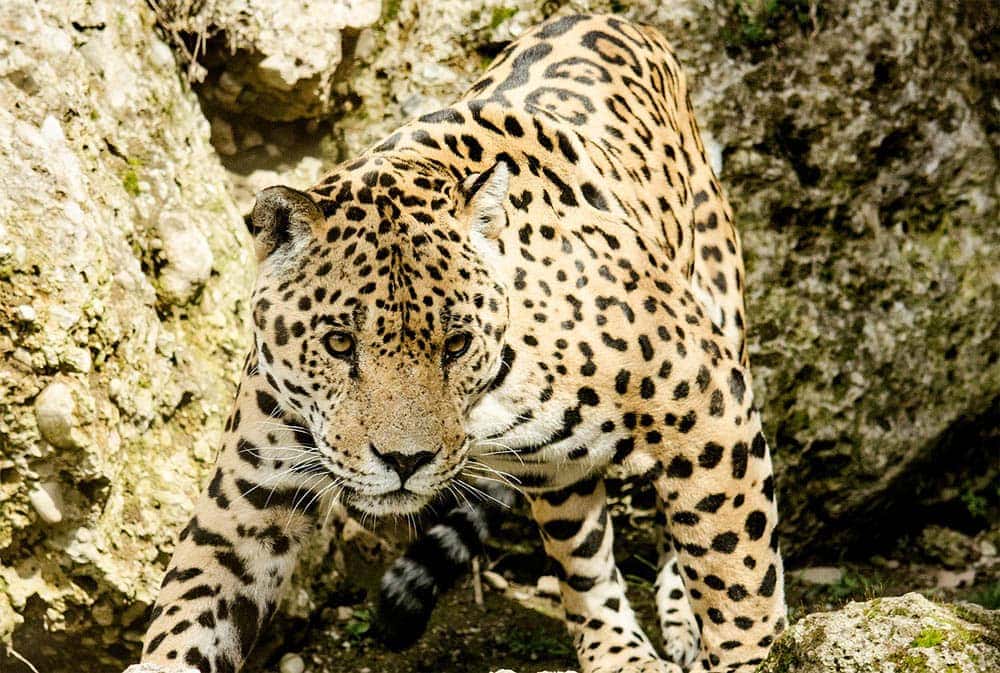
What Is Being Done To Protect Wild Cats In North America?
All the wild cats are protected under law from hunting and trapping in some form. However, the protections vary based on the location and size of the population. For example, bobcats are only protected in a few areas because their population is considered stable.
Lynx are considered endangered in the United States but are trapped legally in Canada. To help safeguard the few remaining Texas ocelots, conservationists are working to restore their habitat and build safe, under-road highway crossings for them.
Because jaguars roam such long distances, protecting them requires an international effort. Recently, several countries agreed on protection arrangements to help safeguard transportation corridors across borders for these cats. Other methods to protect jaguars include cracking down on poaching and the illegal wildlife trade and creating protected areas in the Amazon for their habitat.

Conclusion
Wild cats are among the most mysterious and fascinating members of the animal kingdom. Unfortunately, they’re also some of the most vulnerable. Thankfully, while humans may be responsible for most of the threats, we are also the ones with the ability to protect those remaining as best we can. If you are interested in aiding the conservation efforts, consider donating to reputable organizations working to safeguard wild cats.
Related reads:
Featured Image Credit: Reimar, Shutterstock
